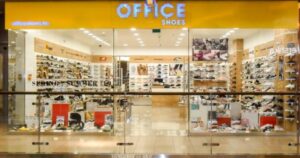In this second article about Clienteling, we will provide tips on how to elevate customer in-store experience to another level.
In-store remains a core focus
Digital channels are becoming a mandatory part of the shopping experience. But studies are revealing that digital also influences up to 75 percent of in-store visits. This validates that the in-store shopping experience is still very much alive.
However, according to a recent survey, 63 percent of retailers today are unable to identify their customers prior to checkout and 20 percent can’t identify them at all. Empowering in-store sales associates with customer data and the right customer engagement technology helps retailers address the problem, increasing their effectiveness as well as revenue.
These points explain why strategies like buy online pick-up in-store and other in-store innovations that integrate digital into the in-store experience are gaining attention. Clienteling is another example of how competent retailers are using digital tools to infuse a spark to the in-store experience.
What is clienteling?
By definition: clienteling is a technique used by retail sales associates to establish long-term relationships with customers based on data about their preferences, behaviors and purchases.
Let’s imagine two scenarios with an associate. In the first scenario, a customer walks into a store and hears: “Can I help you find something?” This interaction is pleasant and makes the customer feel at ease. However, how much better would it be to hear: ““Hi, Mrs. Reynolds! I think you’ll love a new summer piece we just got. It matches perfectly with the shoes you bought last season!”.
With enough data, there’s an opportunity to personalize every store interaction. Overall, clienteling is giving shoppers the experiences they need to love your brand. It’s about collecting the right data, tracking it effectively, and leveraging it in a human way.
Enhancing the in-store experience
Using customer data is what separates this experience from regular interactions. An associate without any knowledge of the customer could create customer frustration by making an offer for a product the customer recently purchased, or not at all interested in. On the other end of the clienteling spectrum is a model applied by luxury retailers, which includes personalized look books, virtual closets or style advisors.

Powered by real-time data, clienteling mobile or tablet applications enable store associates to deliver valuable insights and product recommendations that address a unique customer’s needs. These applications include inventory checks to ensure associates don’t recommend items that are out of stock. They can also contain functionalities regarding payment (store card, loyalty points or possibly mobile payment), returns and exchanges, or order fulfillment.
The advantage of using a clienteling tool is the possibility to guide the customer’s journey via sales associates. Moreover, an intuitive and easy-to-use application helps new store staff to get to speed quickly and lowers frustration by securing pleasant customer interactions regardless of staff experience level.
Next week, in the final article of this series, we will write about the data management and the benefits of Clienteling. Don’t forget to return back!




